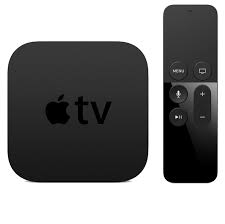There are many different styles of teaching that we as manufacturers hear about when we go about our demos, trainings and tradeshows. It most certainly would not be for us to pitch one over another after all, we a hardware manufacturing company not teachers. That said, in this blog post I would like to highlight some of the Advantages of Interactive LEDs in the classroom over the use of a regular TV with Chromecast or Apple TV.
Why do teachers have Apple TV or Chromecast in the classes?
We’ve seen technology come and go over the last 10 years and even before TouchIT, we saw trends come and go. I used to work for a portable interactive whiteboard company and there was “outrage” when a clever gentleman from MIT if I recall correctly created his own “portable interactive whiteboard” with a Nintendo Wii Mote. Needless to say, it never caught on as it was a bit DIY and the “outrage” was over nothing. What’s my point here? Well, we’ve seen Interactive Whiteboards come and go, Interactive projectors, projectors on their own and the big TV at the front of the class. What is different with the TV is that over time, it has gained some “accessories” to make it a little more useful for the classroom.
The addition of a 50 buck Chromecast dongle to the TV allows the teacher to send his or her screen wirelessly to the TV. Great, no wires. They can also have students send their Chromebook screens up to the TV too from the comfort of their desk. Great I hear you are thinking. Similarly, Apple TV with it’s slightly higher price point is also able to do the same.
Why use and Interactive LED monitor?
The first thing that you should note with the two options detailed above, there is no interaction. They are purely passive I the way that they send the image up to the screen. You cant control it, you cant annotate over it, in fact, you cant actually do anything with those images sent other than look at them.
What is more, both the Apple TV and the Chromecast solution are really designed for the home user. They are designed so that you can send your Netflix account from your cell phone up to your big screen TV. They have not been designed in a way that the teacher has control. If student A connects to the TV, the teacher requires Student A to physically disconnect before Student B can connect. The teacher has no control over this and this is the same for both these options.
You can also only show one screen at a time. What if you want to have both Student A and Student B showing on the TV? Tough luck, you can’t. Enter the Interactive LED running Contribute Cloud Software.
Contribute Cloud is the Answer
We’re at a stage in the progression and development of Interactive LEDs where the software that they come with is what makes the difference. At TouchIT Technologies, we supply our own in-house developed Contribute Cloud.
Contribute Cloud has been developed around the ability and the need to cast in the classroom. What we have done though is we have done it in a way that puts the control back in the hands of the teacher. It is the teacher who decides which student is going to cast and it is the teacher who decides when they disconnect.
Furthermore, we’ve also developed what we call Multi-Cast – the ability to send multiple student’s screens to the LED at the same time. This is great if a teacher wants to do a comparative activity between all students, a group of students or just a couple of students. You have the flexibility to do this.
Not only do you have this functionality, but you also have the ability to annotate on the LED just like you would on a regular whiteboard with a marker, you can’t do that on a TV.
In Summary
In summary, what can be achieved with an Apple TV or Chromecast dongle in the classroom, can be equalled and dramatically improved with an Interactive LED running the Contribute Cloud software. The level of control over the student’s Casts just is not there with Apple TV and Chromecast and it is more of a home-user product that has been shoehorned into the classroom. Yes it works, but let’s face it, it’s not idea.
Thanks for reading.

